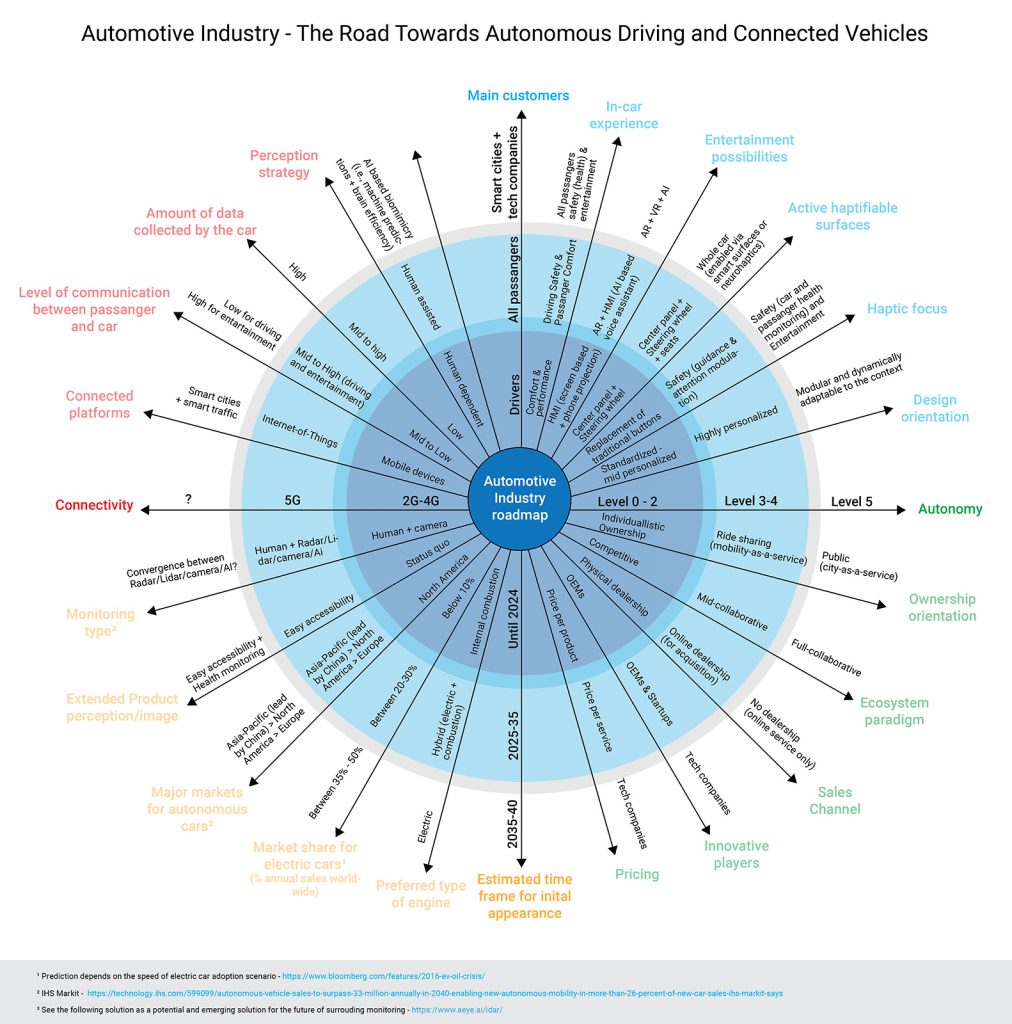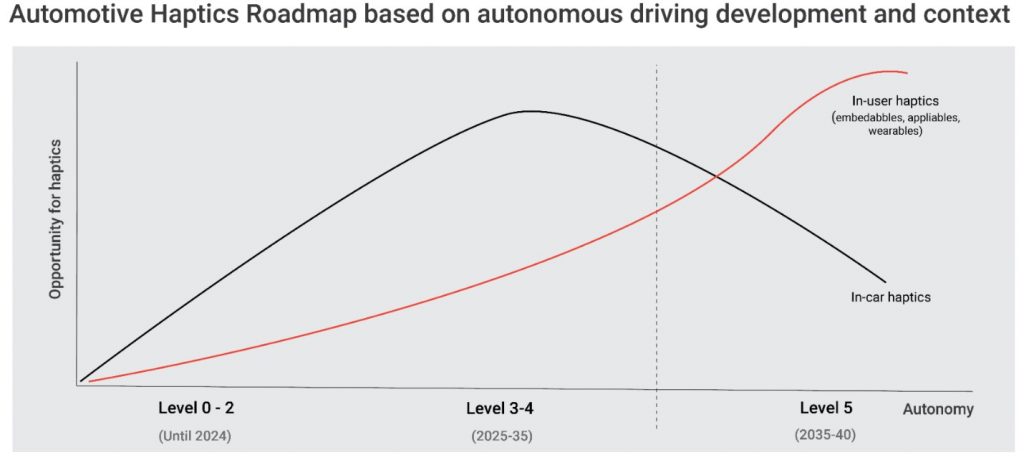By Felipe Almeida, Sr. UX Researcher and Ranjini Raghuveer, Product Manager at Immersion <br/>
As the famous Greek philosopher, Heraclitus said, “Change is the only constant in life.”
The whole world has been affected by the COVID 19 pandemic, not excluding the automotive industry. Manufacturing plants have been forced to shut down. There has been a large scale impact on the exports of parts from China and closures of assembly plants across the US have impacted supply and demand. Industry forecast indicates a decline of 20% to vehicle sales in 2020.
The hope, and current analysts’ projections, are that the industry will take one to two years to recover, returning to projections by 2024. In the meanwhile, the industry, previously perceived as slow to embrace emerging technologies in the past, should take stock and look at how they can quicken the pace of new technology adoption in the car, while people reassess their needs in a post-COVID world.
The current slow down may be the opportunity car manufacturers need to bolster their future growth by reimagining how they can build the car of the future and gain traction towards embracing C.A.S.E. (connected, autonomous, shared, and electric) technologies.

At the macro-level, the automotive industry can be viewed as a complex web of interconnected and intersecting technologies (see diagram below). As an industry, we are currently in the center circle of Level 0-2. As we move outward on the diagram, several disruptive trends will take over the automotive wheel and completely transform the way the car is perceived.
The emergence of new technologies has led to a change in consumer behavior, where digitization, connectivity, electrification giving a whole new meaning to vehicles. We believe the car of the future will be a completely transformed digital cockpit fully automated with haptic surfaces, gesture controls, and immersive experience. For example, at CES 2020 this year, there were many exhibits of completely transformed digital cockpit for the car of the future. Whole interiors of cars were equipped with haptic surfaces. Haptic technology’s value proposition changes and advances alongside the interaction model in the car of the future. Haptics has an important role to play as we adopt more and more technology in the car.
Autonomy is the driver of innovation
The most newsworthy trend, of course, is the rise of autonomous vehicles. But, before autonomous vehicles take the driving out of our hands, in-car technology will increase at a rapid rate. Programmable interfaces, interactive touch surfaces, and seamlessly integrated car controls will need haptics to improve usability and safety.

The chart above shows how the need for haptics will change as automotive technology changes. Trends indicate that between now and 2035 (Levels 0-4), cars will become more technologically sophisticated during the steady and significant drive toward autonomy. OEMs are adding hundreds of features, overloading the driver with multisensory messages and information. There is a huge auditory and visual load on the driver with this technological innovation – creating the need to reduce driver distraction. The design emphasis has to be on driver safety. Adapting in-car haptics on interactive surface elements such as steering wheel, the infotainment system, touch panels, and center console and clusters can serve this need.
In this world of greater technology and growing autonomy, haptic technology will deliver two main value propositions – usability and safety. Once we reach the cycle in which the car becomes a center of relaxation and entertainment, in-car haptics will be less important and in-user haptics will serve as a part of the immersive entertainment system.
Between 2025-2035, trends may include:
- Deeper collaboration between OEMs and startups to jointly innovate
- The growth of artificial intelligence with inbuilt voice assistants providing virtual controls making it highly personalized for the driver
- 5G in the car will catapult connectivity to a whole new dimension, allowing faster data transfers providing information to the driver seamlessly
- Voice assistants will be the bridge between the driver and the car, providing a flavor of augmented reality
- Artificial intelligence sensors can track driver fatigue and alert the driver by providing vibrational feedback via the steering wheel
- High amounts of data flowing from the car interfaces to the driver create a greater need to reduce the attention load on the driver.
- Haptics as a technology can help process the necessary information to the driver safely and may even be responsible for measuring input and providing feedback to proactively adjust user behavior.
Prior to COVID 19, the trend towards MAAS (Mobility as a Service) was on the rise. While we will better understand the long-term impact of COVID 19 on the automotive industry once we return to a semi-state of normalcy, the growth of ride-sharing, vehicle-sharing, mass transit may suffer the largest set-back. As a result, the trend towards on-demand cars may or may not materialize as users see greater value in owning their vehicles for personal hygienic reasons. Therefore, the shift towards vehicle autonomy may take a straighter path with changing the HMI to accommodate shared spaces (addressing the driver and passenger dynamics first) and interchangeable or multiple users advancing at a slower pace.
Beyond 2035 (Level 5) – or sometime thereafter dependent upon market recovery and conditions the migration from active driver to the passive passenger will take place.
- While communication between vehicle and driver will continue, vehicle-to-vehicle communication will replace the definition of basic communication
- With carmakers driving innovation deeply, players like Apple, Amazon, and Google will jointly collaborate with OEMs to provide services to the consumer
- Trends indicate the primary focus of safety will be monitoring and predicting the health of the driver.
- Autonomous car will largely allow drivers and passengers to sit in the car safely with less communication, manual control, and operation
- Entertainment capabilities in the car such as augmented reality and virtual reality will give a premium feel to the driver
Between now and 2040, a complete paradigm shift is expected, that will result in:
- The transposition of the growing level of autonomy versus the adoption of haptics in the complete cockpit of the car. Automotive controls will move to user devices, as will the UI.
- Greater demand for immersive experiences, adding entertainment to the value of haptics. Once set, the role that haptics plays in safety and improved user experience will match the required level of driver intervention during a car ride.
- A virtual cockpit where you are able to control everything from windows, seats to entertainment packages neatly with tactile feedback.
- Wearables and embedded elements will shift haptics as a technology for ‘in-car haptics’ to ‘user haptics’ – not limiting feedback to just touch panels, surfaces or center consoles but instead creating tactile feedback on the clothes of the user and car seats as well that connect with the car data system to give environmental experiences.
- With autonomous cars making travel safer, more viable, connected, and entertaining without the need for manual intervention or data overload, the future holds no barriers.
Perhaps, the future is a flying car with an immersive experience virtually breaking all barriers of communication? It may not feel like it currently, but the future is bright. We can start working towards amazing new experiences, now.

